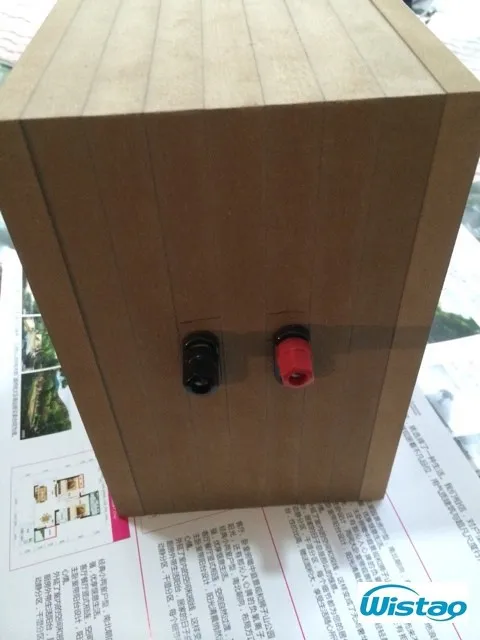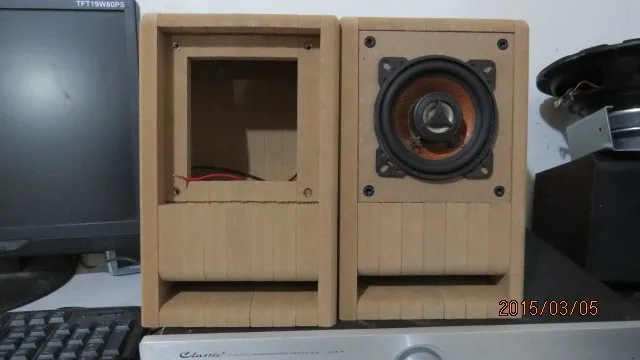How to DIY Labyrinth Speaker with IWISATO 4-inch HIFI Speaker Empty Cabinet Kits







The high-density surface is smooth, seamless laminated without glue, glue also has a thickness of multi-layer stack will increase a few millimeters that lead to the panel will become small, screw holes will not be reached.
It is a pair very popular labyrinth speaker cabinet DIY kits, which adopt double back guide pipe, its return passage measured 1.6 meters, and sound quality is relatively pure. Its panel can be replaced if you have spares. This speaker cabinet kits support 2.5—4 inches full range speaker.
All kits Material: plate is HDF rather than MDF; fasteners are made of industry 8.8 level black hex bolts, lock nuts are made of Brass, fastening nuts of panel is made of steel-plated color zinc. Accessories excluded terminals and wiring. And its cross weight is about 9kg.
 |
| IWISATO 4-inch HIFI Speaker Empty Cabinet Kits |
 |
| Exploded view of Labyrinth Speaker with IWISATO 4-inch HIFI Speaker Empty Cabinet Kits |
 |
| Front panel and the body of speaker |
 |
| Inside Structure of Labyrinth Speaker |
 |
| Exploded view of side plate and front panel, body |
 |
| Fixed screw and speaker cabinet |
There are assembling steps as below and using the last version speaker cabinet as an example.
1. Please check if the shipments are completed, and placed separately firstly.


2. Use a steel saw blade (or a saw) to cut the inner ribs (waste) from the plywood sheet down, or rip them off, then use a chisel, rasp or sanding wood it that left over burrs.


3. Install the connecting wire terminal (If there are not holes, please drill hole to fit terminals), prepare to soldering cables are not shorter than 55 cm, and soldering it to the terminal with spare.

4. Start assembling them with. Black hex bolts, lock nuts

5. After assembled, polish and smooth the external surface.
6. Install the panel, and soldering the cables to speaker units.

At the same time, please avoid moisture.
Mode details, please visit https://www.iwistao.com/collections/empty-woodem-cabinets/products/iwistao-hifi-speaker-empty-cabinet-kits-labyrinth-structure-with-high-density-fibreboard-for-2-5-4-inches-full-range-speaker-unit?variant=18118295257203
Or you may select from the collection below.
Or you may select from the collection below.



